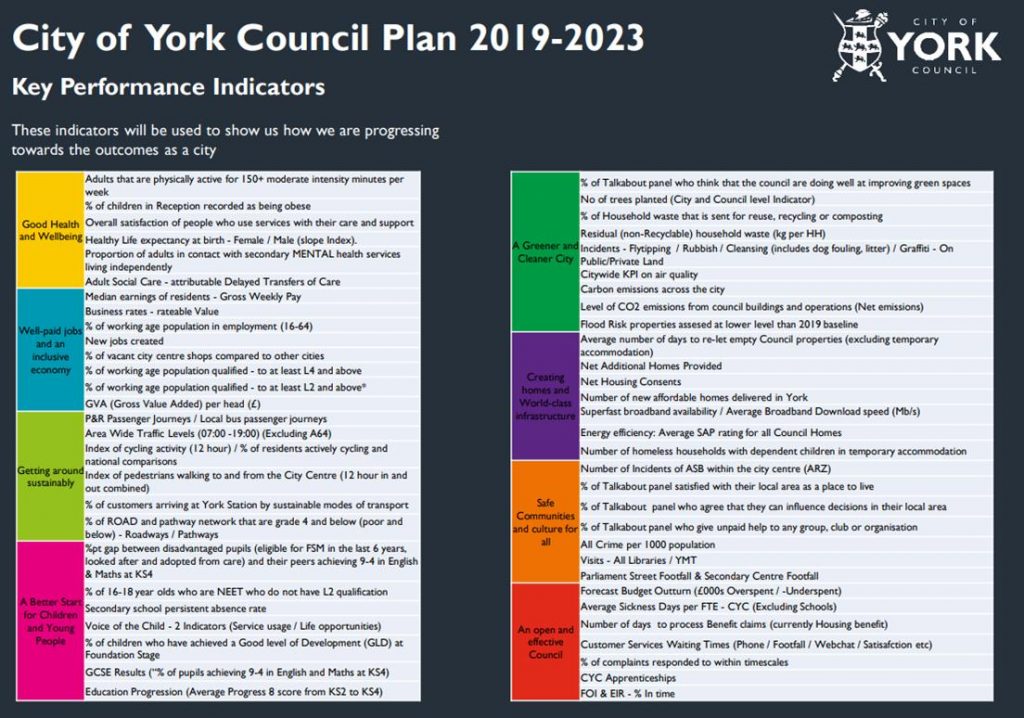The York Council are set to adopt a new “Council Plan” on Thursday. Although a significant document, it is likely to attract little comment. This is partly because much of its content is anodyne and partly because it is linked to impenetrable bureaucratic processes and documentation Only 353 residents responded to the initial consultation on the document.
Council Plans are rarely a “good read”
This plan though does have one major setback. It fails to react to the decline in street level public service standards that have been seen in recent months.

The KPIs suggested are essentially those that have been carried over from previous plans. They have the merit of a good historic database making trends easier to judge and they are generally easy to collect, but they offer little for those seeking “smart” targets.
Nor has the Council addressed the issue of service level agreements. This exercise presented an opportunity to update and reissue what used to be known as “Customer Contracts” but it seems that taxpayers will remain largely in ignorance of what their payments are buying.
There are a range of day to day services which residents depend on. They therefore legitimately might expect to have access to stats which, for example, tell them
- How many potholes are reported and how quickly they are fixed?
- How much litter there is on our streets?
- How many streets are 98% clear of weed growth?
- How many reports there have been of obstructions to public paths and how quickly those obstructions are removed?
- How many bins are not emptied as scheduled each week?
- How reliable local bus services are?
- How many streetlights are working?
- Satisfaction with Council estates (communal areas)?
- Time taken to resolve issue reports by different channels (on line, email, telephone, personal visit)?
All would give residents a clearer picture of Council performance than some of those suggested.

